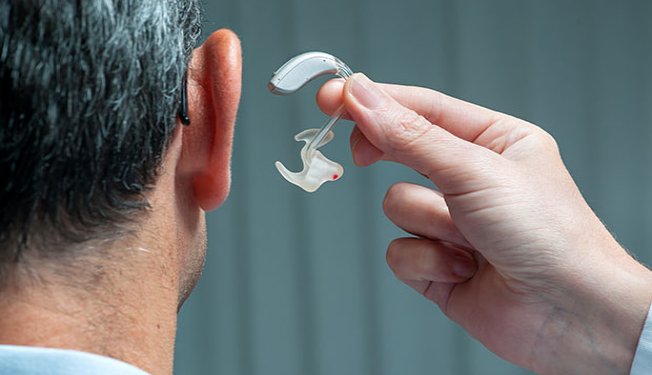By Carol Stoll
Stimulus frequency otoacoustic emissions (SFOAEs) are sounds generated by the inner ear in response to a pure-tone stimulus. Hearing tests that measure SFOAEs are noninvasive and effective for those who are unable to participate, such as infants and young children. They also give valuable insight into cochlear function and can be used to diagnose specific types and causes of hearing loss. Though interpreting SFOAEs is simpler than other types of emissions, it is difficult to extract the SFOAEs from the same-frequency stimulus and from background noise caused by patient movement and microphone slippage in the ear canal.
2014 Emerging Research Grants (ERG) recipient Srikanta Mishra, Ph.D., and colleagues have addressed SFOAE analysis issues by developing an efficient data-driven analysis procedure. Their new method considers and rejects irrelevant background noise such as breathing, yawning, and subtle movements of the subject and/or microphone cable. The researchers used their new analysis procedure to characterize the standard features of SFOAEs in typical-hearing young adults and published their results in Hearing Research.
Mishra and team chose 50 typical-hearing young adults to participate in their study. Instead of using a discrete-tone procedure that measures SFOAEs one frequency at a time, they used a more efficient method: a single sweep-tone stimulus that seamlessly changes frequencies from 500 to 4,000 Hz, and vice versa, over 16 and 24 seconds. The sweep tones were interspersed with suppressor tones that reduce the response to the previous tone. The tester manually paused and restarted the sweep recording when they detected background noises from the subject’s movements.
The SFOAEs generated were analyzed using a mathematical model called a least square fit (LSF) and a series of algorithms based on statistical analysis of the data. This model objectively minimized the potential error from extraneous noises. Conventional SFOAE features such as level, noise floor, and signal-to-noise ratio (SNR) were described for the typical-hearing subjects.
Overall, the results of this study demonstrate the effectiveness of the automated noise rejection procedure of sweep-tone–evoked SFOAEs in adults. The features of SFOAEs characterized in this study from a large group of typical-hearing young adults should be useful for developing tests for cochlear function that can be useful in the clinic and laboratory.
Srikanta Mishra, Ph.D, was a 2014 Emerging Research Grants scientist and a General Grand Chapter Royal Arch Masons International award recipient. For more, see “Sweep-tone evoked stimulus frequency otoacoustic emissions in humans: Development of a noise-rejection algorithm and normative features” in Hearing Research.
We need your help supporting innovative hearing and balance science through our Emerging Research Grants program. Please make a contribution today.

















